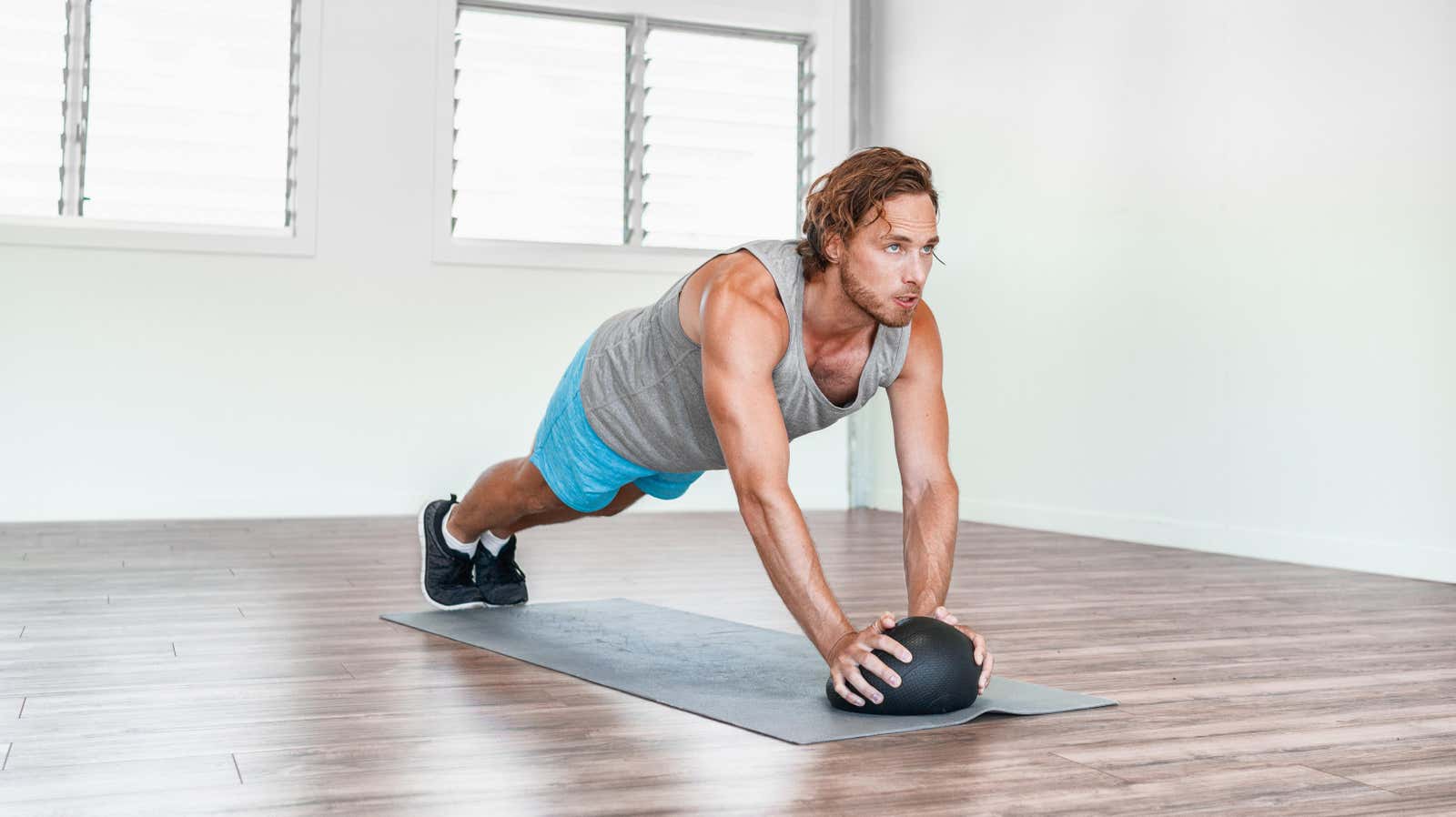What Are Stabilizer Muscles (and Do You Really Need to Train Them)?

You may have heard that dumbbell exercises are better than barbell exercises because they work better with your “stabilizers,” or that free weights are better than machines for the same reason. But what are stabilizer muscles? Are they really neglected when doing exercises on simulators, and are they really that important for training?
What are stabilizing muscles?
This is going to get fuzzy because there isn’t really a consensus on what stabilizer muscles are. This 2014 study searched the literature for references to stabilizing muscles and attempted to come up with a definition. Here’s what they came up with:
muscles that contribute to joint stiffness through co-contraction and exhibit an early onset of activation in response to perturbation via either a feed-forward or feedback control mechanism.
So, stabilizer muscles are muscles that stabilize. What are these muscles? This is a more difficult question. You can find plenty of research on “lumbar [lower back] stabilizers”, “trunk [core] stabilizers”, or “knee stabilizers”. But it turns out that these are not special muscles that only stabilize the joints. For example, in this study on knee stabilizers, four muscles are named in the quadriceps femoris and hamstring groups (the large muscle groups of the front and back of the thigh, respectively). Are they stabilizers or just the muscles that move the legs?
Stabilizers in one exercise can be prime movers in another.
That’s why I don’t worry too much about machines that neglect the “stabilizing” muscles. If you do a variety of quad exercises and a variety of hamstring exercises, you are almost guaranteed to engage your quads and hamstrings, which act as knee stabilizers as you run and jump.
Or to take another example, single-leg exercises such as squats and lunges are great for training the abductors (thigh muscles) and adductors (inner thigh muscles) because these muscles work to keep your leg stable when you swing. weight on her. But if a person has never done single leg exercises, they could still work those muscles by doing exercises that target them as prime movers, such as adductor and abductor machines.
Stability is coordination, not just strength
If we look again at the research on knee stabilizers, scientists have a theory that it is beneficial to use these stabilizer muscles while running and jumping. It’s not just about the strength of these muscles, but your ability to activate them when they’re needed.
So keeping your knees stable can be done not only with free weights—though they are great—but also with running, jumping, turning, and cutting exercises. (Think of football players running on cones and rope ladders.)
In other words, not only strength is important for joint stability, but also practice . If you want to be steady and stable when doing certain movements, you need to train your brain to control those muscles at the right time and in the right order.
Strength and stability sometimes contradict each other
So what to do in the gym? You may notice that strong people tend to use compound exercises. They can squat and lie down with a barbell, but finish their workouts with dumbbell presses or leg extensions. There is a continuum of training, with strength at one end and stability at the other, and each of these exercises falls on a different point on that continuum.
Let’s take the bench press as an example. In the bench press, you need to use your legs to stabilize your torso, your torso to create a stable platform for your arms, and your arms to shift the weight. Even though you’re training the chest and triceps as the main movers, you’re using a lot of the muscles in your shoulders, core, back, and legs as stabilizers.
We can use our stabilizers more if we do something like dumbbell presses while lying on our backs on a yoga ball. We would have had to work harder to keep things stable, but as a result, we wouldn’t be able to use nearly the same weight. We would train stabilizers more, and less main movers.
We would get the opposite on a chest press machine. There you don’t need to stabilize much at all – all you need to sit in your chair and not fall. The chest and triceps are no longer limited by what our stabilizers can handle, so we can “lift” even more weight. (This comes with the caveat, of course, that you can’t compare machine labels to barbell or dumbbell weights ; the mechanics are different.)
So do you need to “train” the stabilizers?
My opinion is that if you train every part of your body, no matter how you do it, you will eventually train all the stabilizer muscles. Yes, even if you are doing all the machine routines. Only the routine should be well rounded.
If you stick to “functional” exercises that require significant stabilization, you’re probably doing a lot for your stabilizers without even thinking about it. The trade-off is that you may not be focusing on every exercise.
You can easily get the best of both worlds by doing a variety of exercises. If you never do anything that makes you feel unbalanced, add single-legged exercises, carrying, or some other slightly unstable work to your routine. (There’s no need to be barefoot , although you can if you want to, I guess.) And if you’re working on stability a lot, try some machines or barbell exercises from time to time to make sure you’re also building strength. .